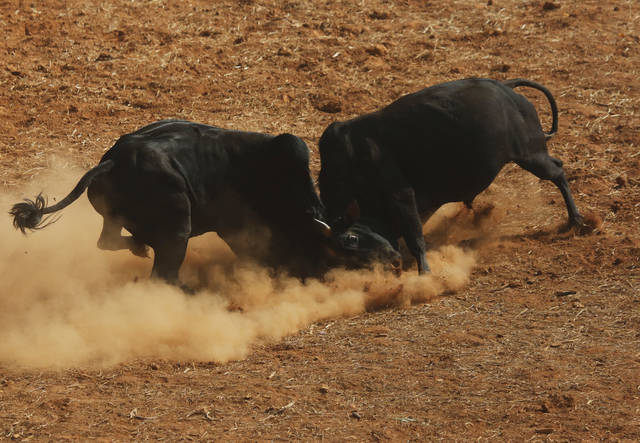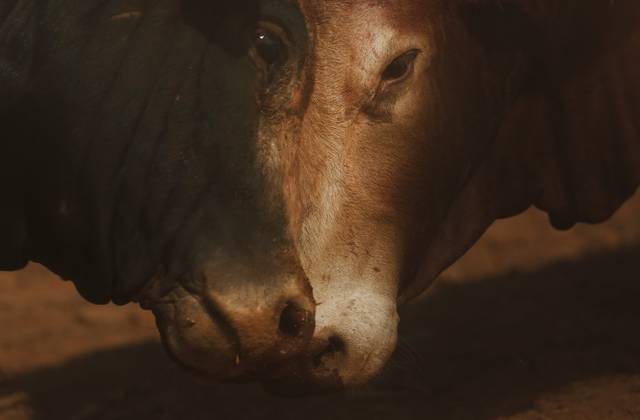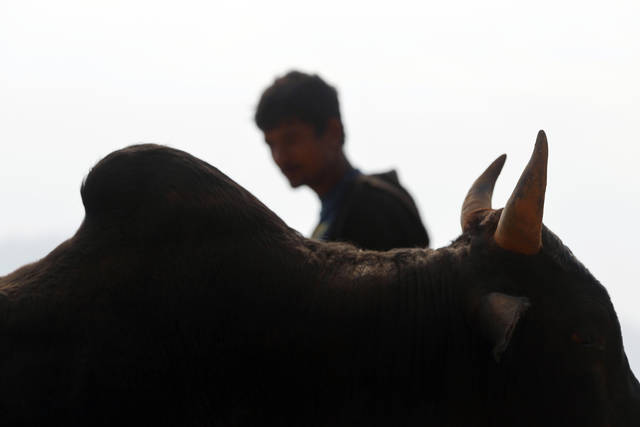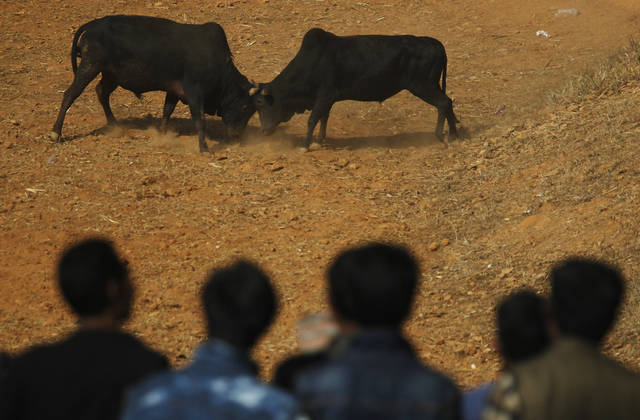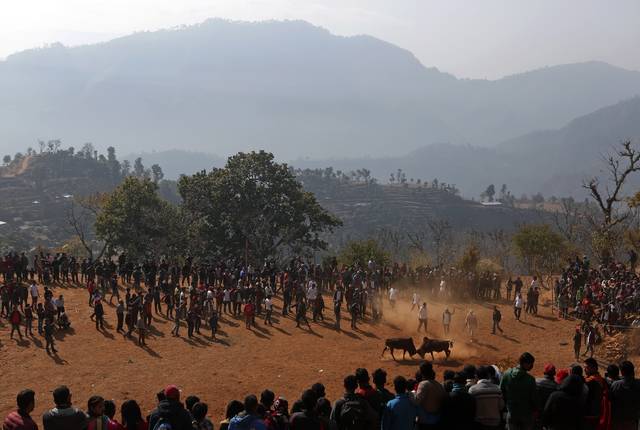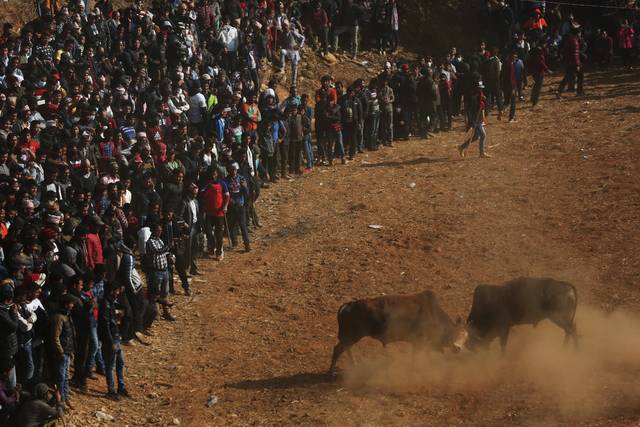TARUKA, Nepal — The bulls have easy lives for most of the year. They don’t pull plows or wagons. They are fed eggs, rice, corn and buttermilk.
Then, for one day near the end of winter, they fight, lowering their heads and locking horns on a dusty field as thousands of people cheer from the hillsides in this sleepy village in Nepal.
The bulls push, they shove, they bellow and eventually — normally after 15 minutes or so —— one slinks away and a winner is declared. There are occasional bruises, but villagers say bloodshed is very rare.
Twenty pairs of bulls trained for this year’s festival. Each bull wrestles once. Winners get the honor of victory and 5,000 rupees ($50). Losers get 3,000 rupees ($30). If there is no winner after 30 minutes, the prize money is divided equally.
Organizers believe bulls have been fighting in Taruka for more than 200 years, making the village famous across the region.
But every year, villages like Taruka are losing young men who leave for cities — or other countries — in search of jobs, money and easier lives. As villages empty of their men, those who remain increasingly fear traditions like the bull fights will end.
Dilip Shrestha brought his 6-year-old bull to this years’s festival. He had been preparing it for six months.
“I am not participating in the bull fight for the prize money but I believe we should continue this tradition that our great-grandfathers began centuries ago,” said Shrestha, whose bull won its fight last year. “Our small village is known to the outside world because of this unique tradition.”
The fights are held during Nepal’s Maghe Sankranti festival, which marks the beginning of warmer and longer days. Residents say the fights were originally organized by Nepal’s former royal rulers, who wanted to entertain villagers when they came after the year’s harvest to collect taxes.


